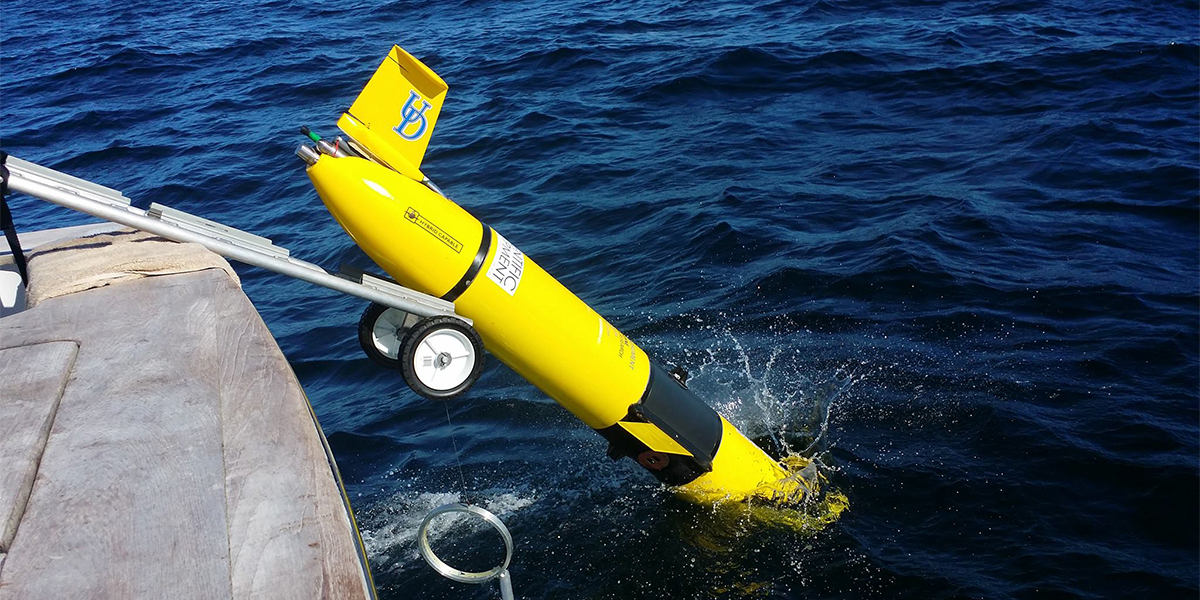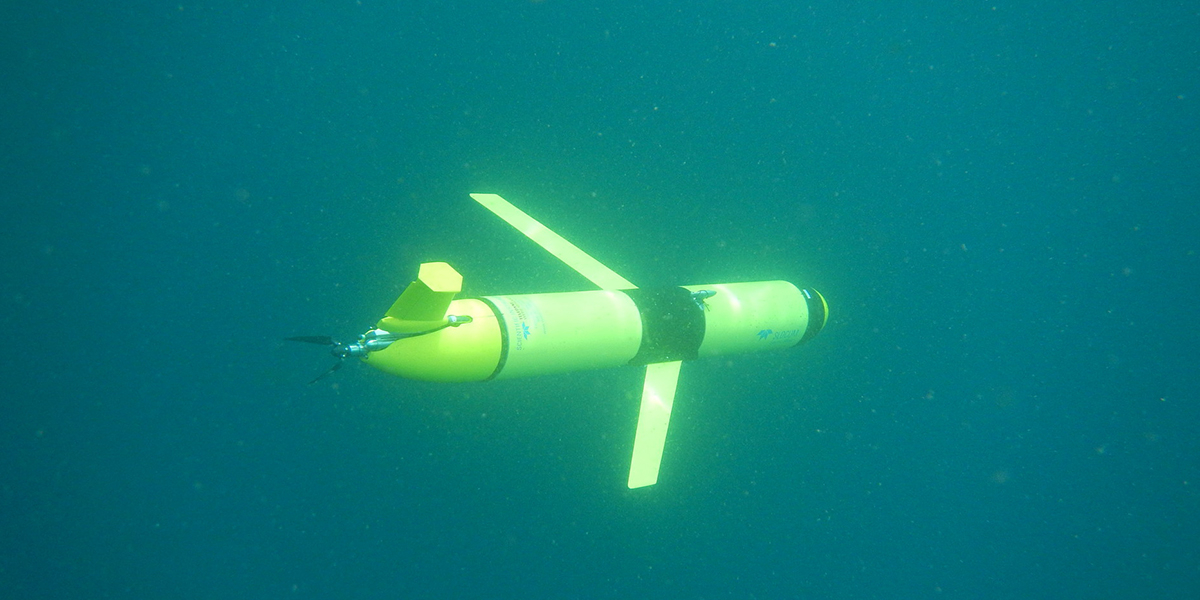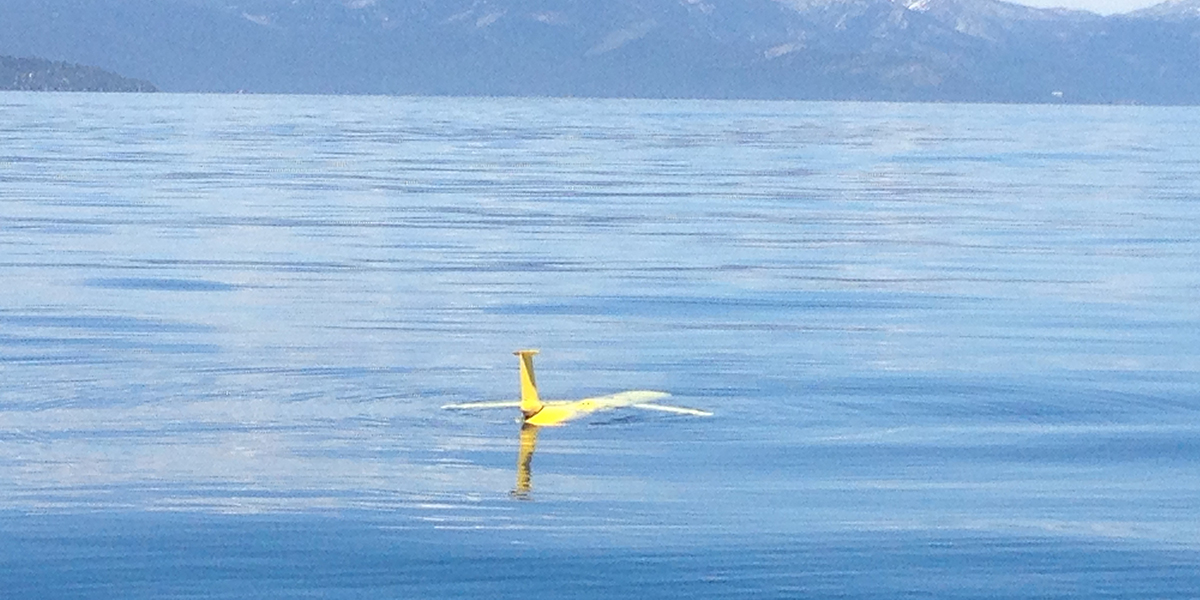High tech underwater gliders provide scientists with latest ocean and climate change information

Large Scientific Infrastructure
The gliders are funded by the so-called NWO-GWI, for Large Scientific Infrastructure by the Dutch Research Council. The funding was granted last year for the acquisition of autonomous and remotely controlled equipment for the renewal of the national research fleet. From the NIOZ department of National Marine Research Facilities, Marck Smit is involved in the tender process. “The gliders will be used for research by the entire marine research community based in The Netherlands. After tendering, we opted for cooperation with Teledyne Webb Research in the United States of America. The gliders can travel 10 thousand kilometers with one pack of batteries. This makes them not only high tech, but also something that electrical cars can only dream of.”

Slow underwater torpedoes
Femke de Jong, physical oceanographer at the NIOZ, is comparing the shape of the gliders with that of torpedoes. “You can program them to travel a particular route through the water for an entire year, while using as little energy as possible. Mind you, they move much slower than real torpedoes: about 0.9 km per hour. Along the way, we measure the temperature of the water, its salinity, pressure and oxygen level, for example, which indirectly provide information about ocean currents, up to a depth of about one kilometer.”
One of the three gliders is equipped with a propellor, which is of particular use in research in fast-flowing water like the North Sea, or off the coast of Greenland, for instance. De Jong: “You need a glider that is still operable in such circumstances.”
Precise and latest images of changes in the seawater
Using gliders for her measurements, De Jong hopes to gain a better image of the role of ocean currents and whirls play in the changing climate.
De Jong: “Since 2014, we have been studying the ocean currents around Greenland. In a long row, steel cables with measurement equipment are anchored to the bottom of the ocean at a distance of 50 km from each other, measuring the characteristics of the water and the currents. This equipment has already provided much new information. However, as we can visit this site with our research vessel only once every two years to collect our data, it doesn’t give us any insights into the latest changes.”
The gliders, on the other hand, continuously transmit the latest information. “Every time they surface, we receive the results of the last measurements”, says De Jong. “Apart from that, in the future, gliders will enable acoustic communication with the measuring devices that are attached to the ocean floor. This will provide us with that data much faster and even allow us to compare seasons.”

Import the effect of eddies in ocean models
Gliders furthermore give a much more accurate image of large whirls in the water, so-called eddies. De Jong cooperates with physical oceanographer Caroline Katsman of Delft University of Technology, who develops ocean models that she, among other things, uses to simulate the currents around Greenland. Together, they hope to be able to find out how, on a scale of a few kilometers, eddies cause the composition of the seawater to vary seasonally or even change across the years.
Katsman: “With my models, I try to understand how physical processes determine the currents in this area, and how, in for example 50 or 100 years, this will possibly be changed under the influence of climate change. The information from the gliders will give me a much completer idea of the variations in currents. According to the most detailed ocean models, eddies are very important for mixing the water and for the formation of deep water in winter. However, we haven’t been able to measure that directly, as you cannot go there in winter. We would be able to program the gliders beforehand to cross the eddies a few times at the right time of the year. Such eddies would then be measured much better.”
Finding whales without noise in the data
A totally different type of research for which gliders can make a big difference, is that of Frans-Peter Lam, senior scientist of sonar research at TNO, the Netherlands Organisation for Applied Research. Among other things, he conducts acoustic research on whales. “It is difficult and expensive to visually monitor sea mammals in the ocean. It is really only possible when they show themselves at the water surface. So that is why it isn’t very well known yet which whale species swim in which parts of the oceans in what seasons. If, in the future, the gliders would be equipped with recorders and hydrophones, I would be able to use them to find out. The nice thing about gliders is that they don’t produce any sound themselves. You can hear the noise of water moving, but you don’t hear a motor, and thus there is no noise in your data.”